Simple Machines – Principle Models: Pulleys
The pulley is a simple machine that can be used to efficiently pull forces.
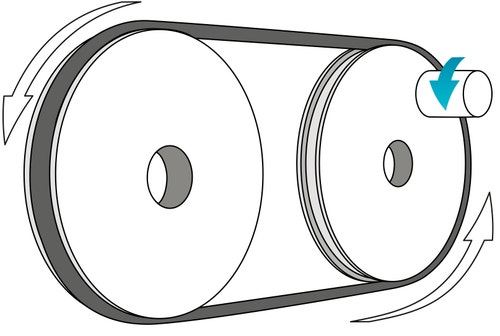
Connect
(5-10 Minutes)
Things to talk about:
- What do you know about this simple machine?
- Where do we use this simple machine?
- Why do we use this simple machine?
Relate students’ answers to some of the images from “Images for Classroom Use” or find ideas from the “Overview: Pulleys” section to stimulate students’ interest.
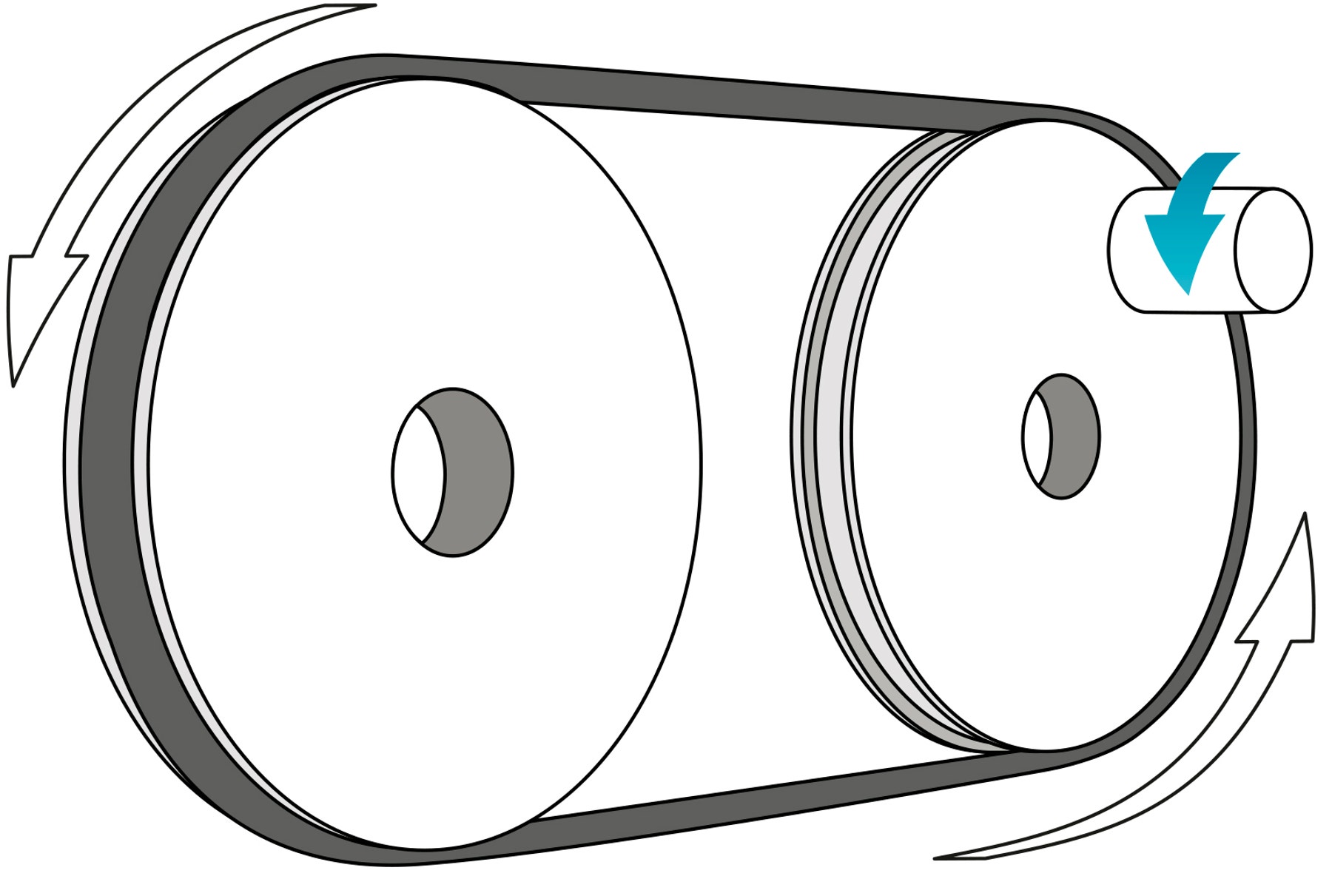
Construct
(5-10 Minutes)
Build D1 (Direction of rotation).
Follow Building Instructions D, pages 4 to 8, steps 1 to 8.
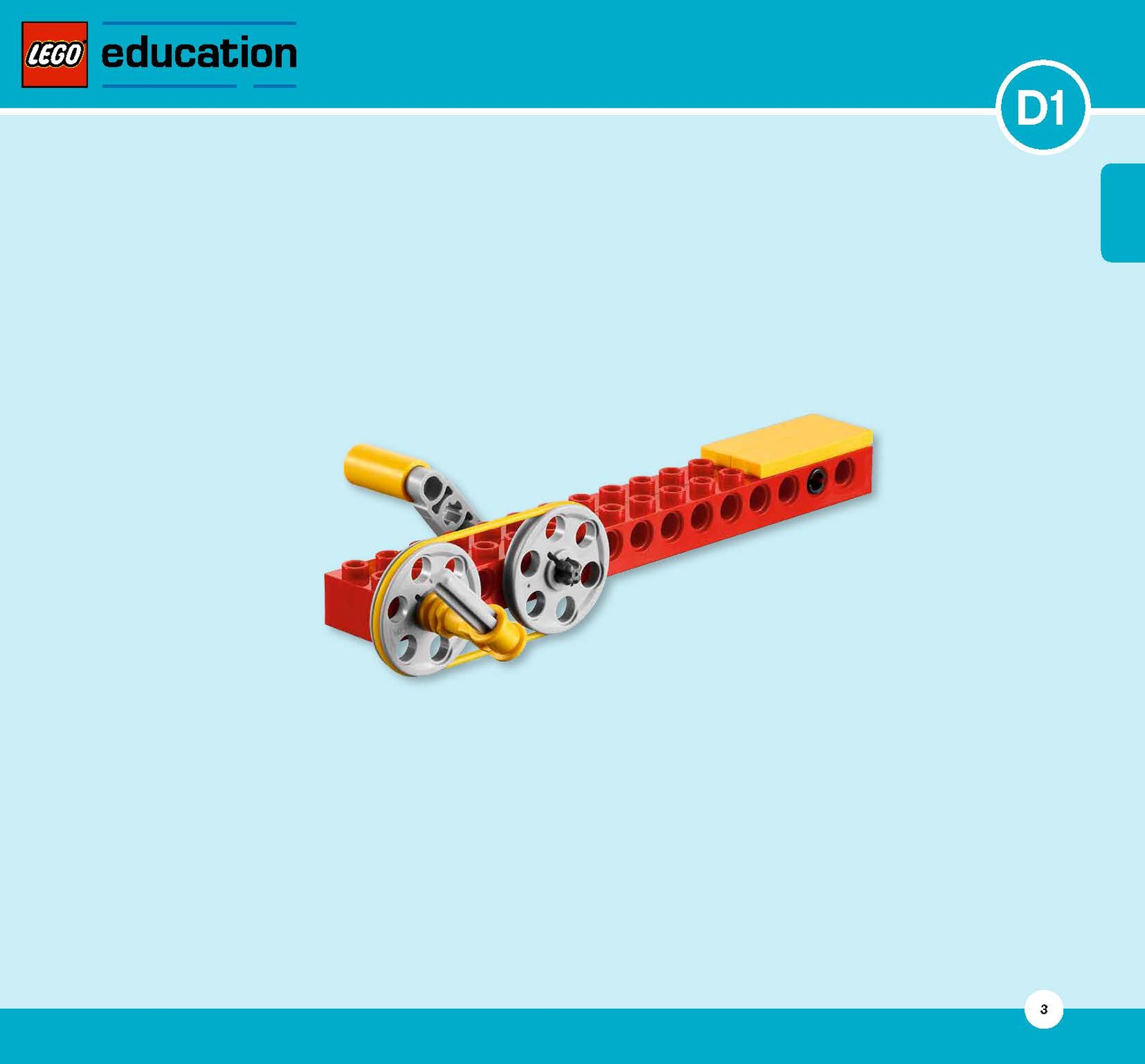
Label the pulleys.
Draw lines from the words to the picture of the model.
The drive wheel is the pulley that is turned by an outside effort, in this case your hand. Any pulley that is turned by another pulley is called the driven wheel or follower.

Contemplate
(5-10 minutes)
Try out the model and make observations.
Note: It is recommended that students work in pairs; one student can observe the position marker while the other cranks the handle a full turn.
Crank the handle one full turn, and count how many times the position marker turns.
One turn of the handle results in one turn of the position marker (the gray axle). The speed of the rotations of the drive and the driven pulleys are the same, because the wheels have the same diameters.
Observe which way the pulleys turn when you crank the handle, and draw arrows to show the directions they turn in.
The pulley wheels turn in the same direction.

Construct
(3-5 Minutes)
Build D2 (Changing direction of rotation).
Follow Building Instructions D, page 10, step 1.
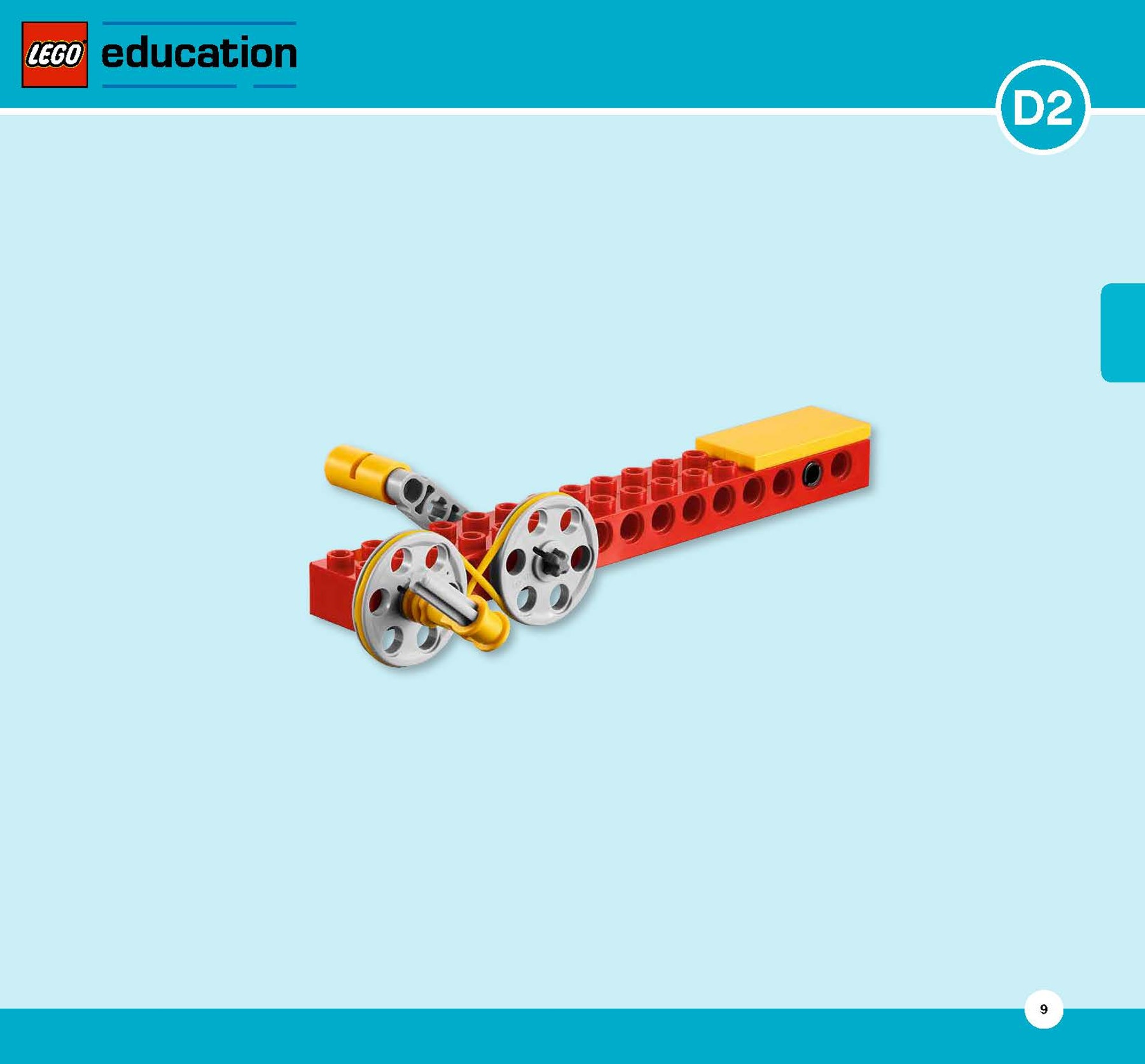
Label the pulleys.
Draw lines from the words to the picture of the model.
*The drive wheel is the pulley that is turned by an outside effort, in this case your hand. Any pulley that is turned by another pulley is called the driven wheel or follower.
*
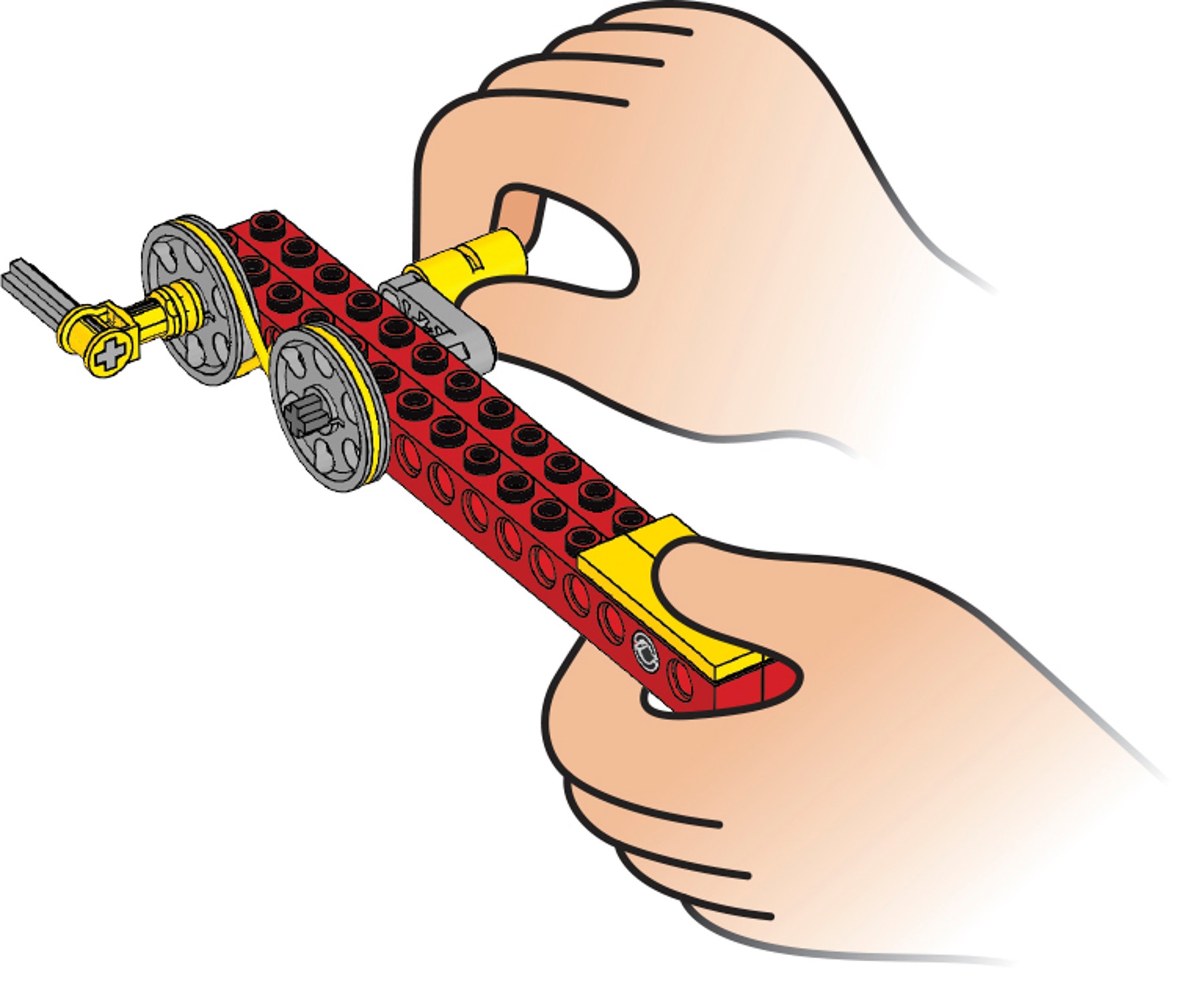
Contemplate
(3-5 minutes)
Try out the model and make observations.
Crank the handle one full turn, and count how many times the position marker turns.
One turn of the handle results in one turn of the position marker (the gray axle). The speed of the rotations of the drive and the driven wheels are the same, because the wheels have the same diameters.
Observe which way the pulleys turn when you crank the handle, and draw arrows to show the directions they turn in.
The pulley wheels turn in opposite directions, because the pulley belt is twisted.
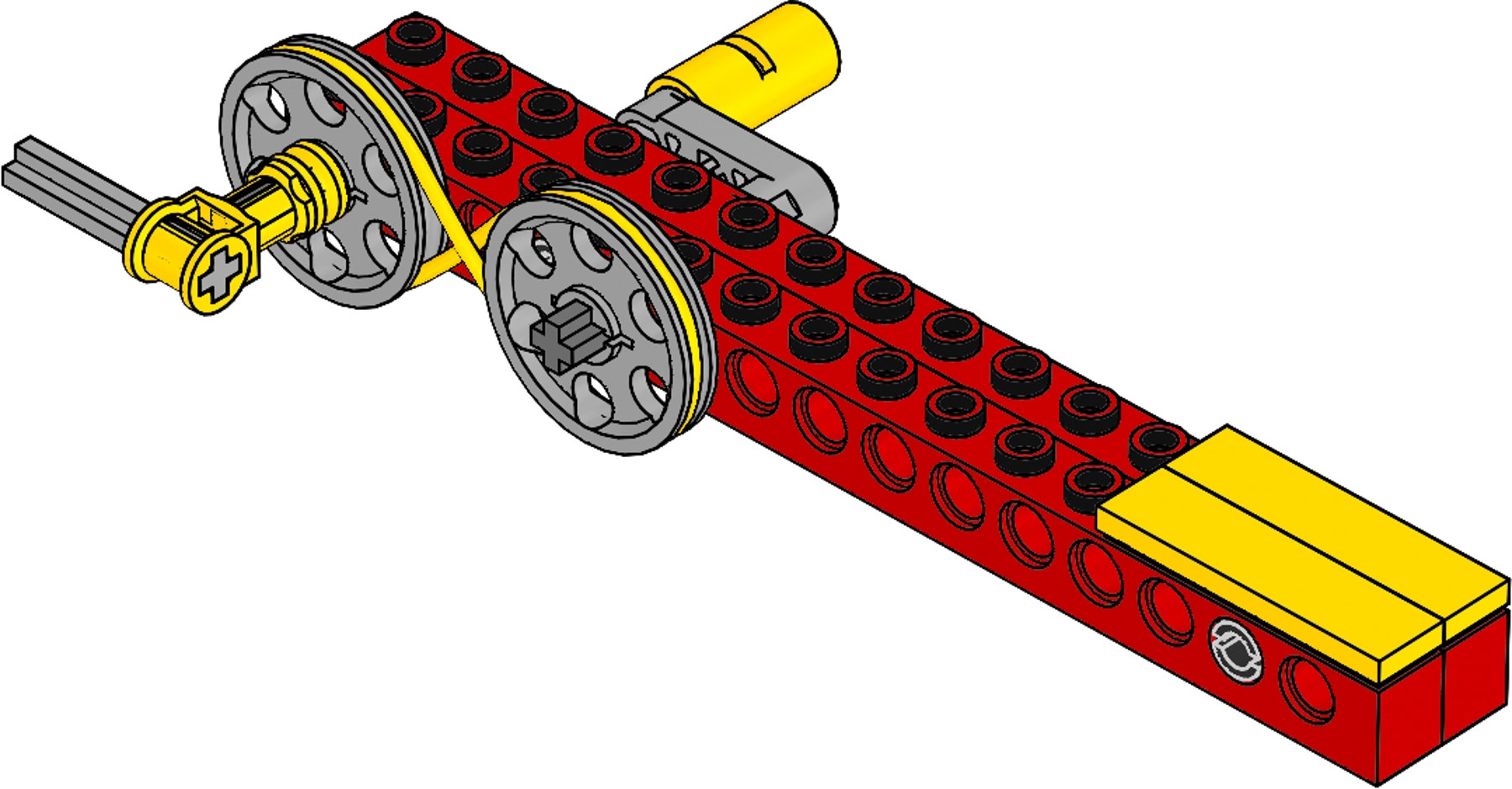
Construct
(3-5 Minutes)
Build D3 (Increasing speed of rotation).
Follow Building Instructions D, pages 12 to 16, steps 1 to 7.

Label the pulleys.
Draw lines from the words to the picture of the model.
The drive wheel is the pulley that is turned by an outside effort, in this case your hand. Any pulley that is turned by another pulley is called the driven wheel or follower.

Contemplate
(3-5 minutes)
Try out the model and make observations.
Crank the handle one full turn, and count how many times the position marker turns.
*One turn of the handle (the large drive wheel) results in three turns of the smaller driven wheel. This ratio of 1:3 (or 1/3) is called the gearing up ratio. Increasing speed increases the speed of rotation but decreases the force, and the belt can slip.
*
Observe which way the pulleys turn when you crank the handle, and draw arrows to show the directions they turn in.
The pulley wheels turn in the same direction.
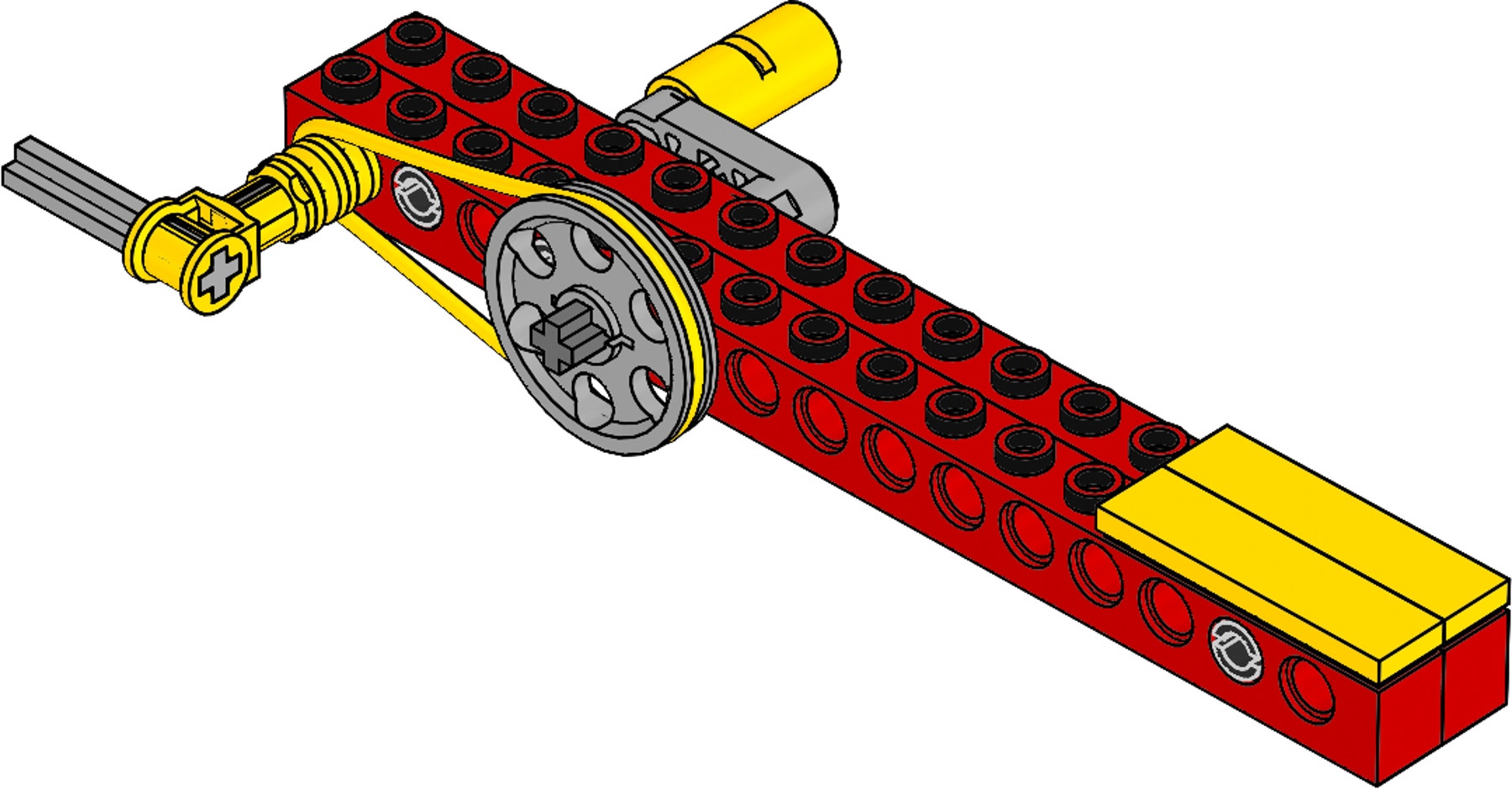
Construct
(3-5 Minutes)
Build D4 (Decreasing speed of rotation).
Follow Building Instructions D, pages 18 to 22, steps 1 to 8.
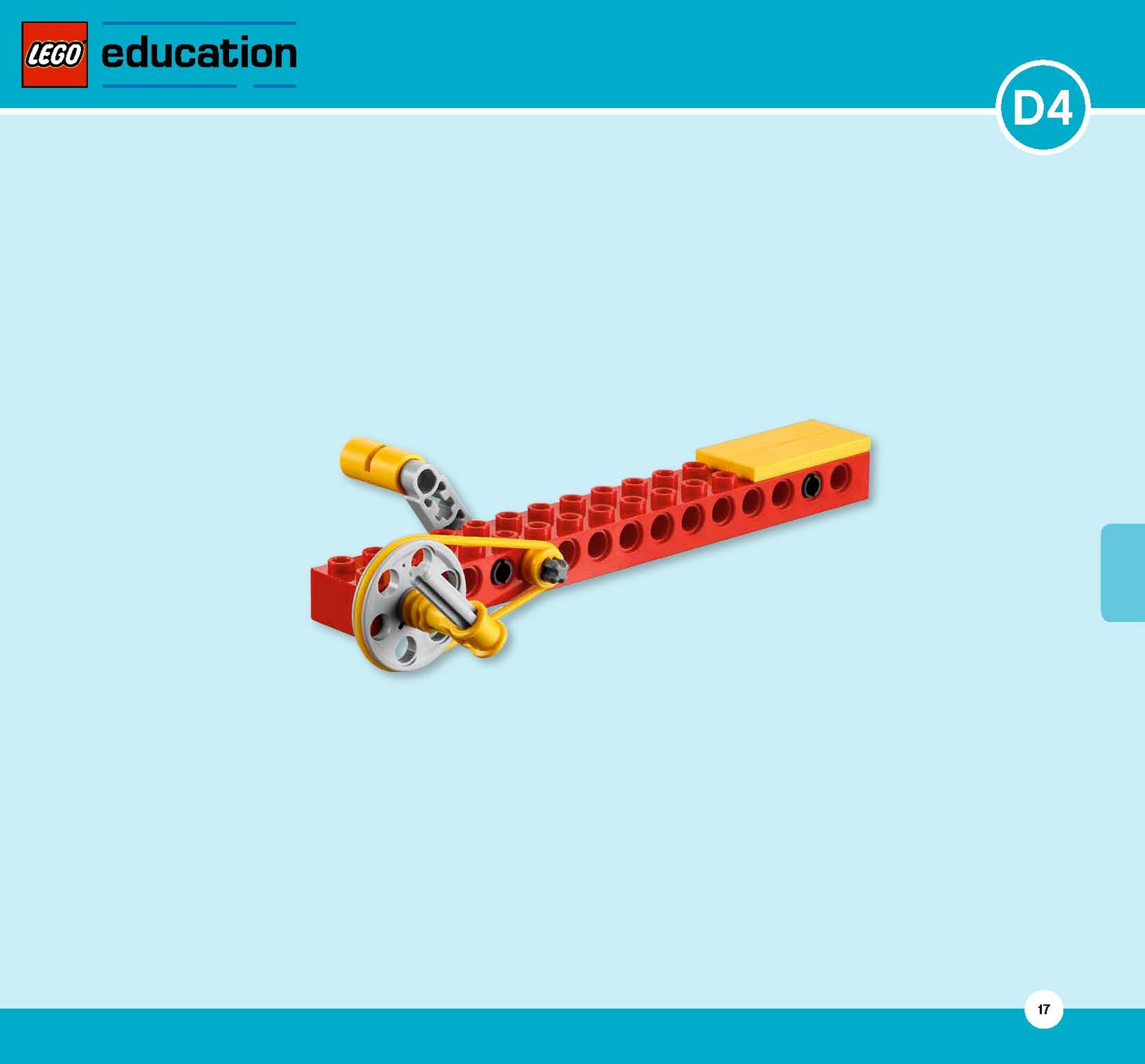
Label the pulleys.
Draw lines from the words to the picture of the model.
The drive wheel is the pulley that is turned by an outside effort, in this case your hand. Any pulley that is turned by another pulley is called the driven wheel or follower.
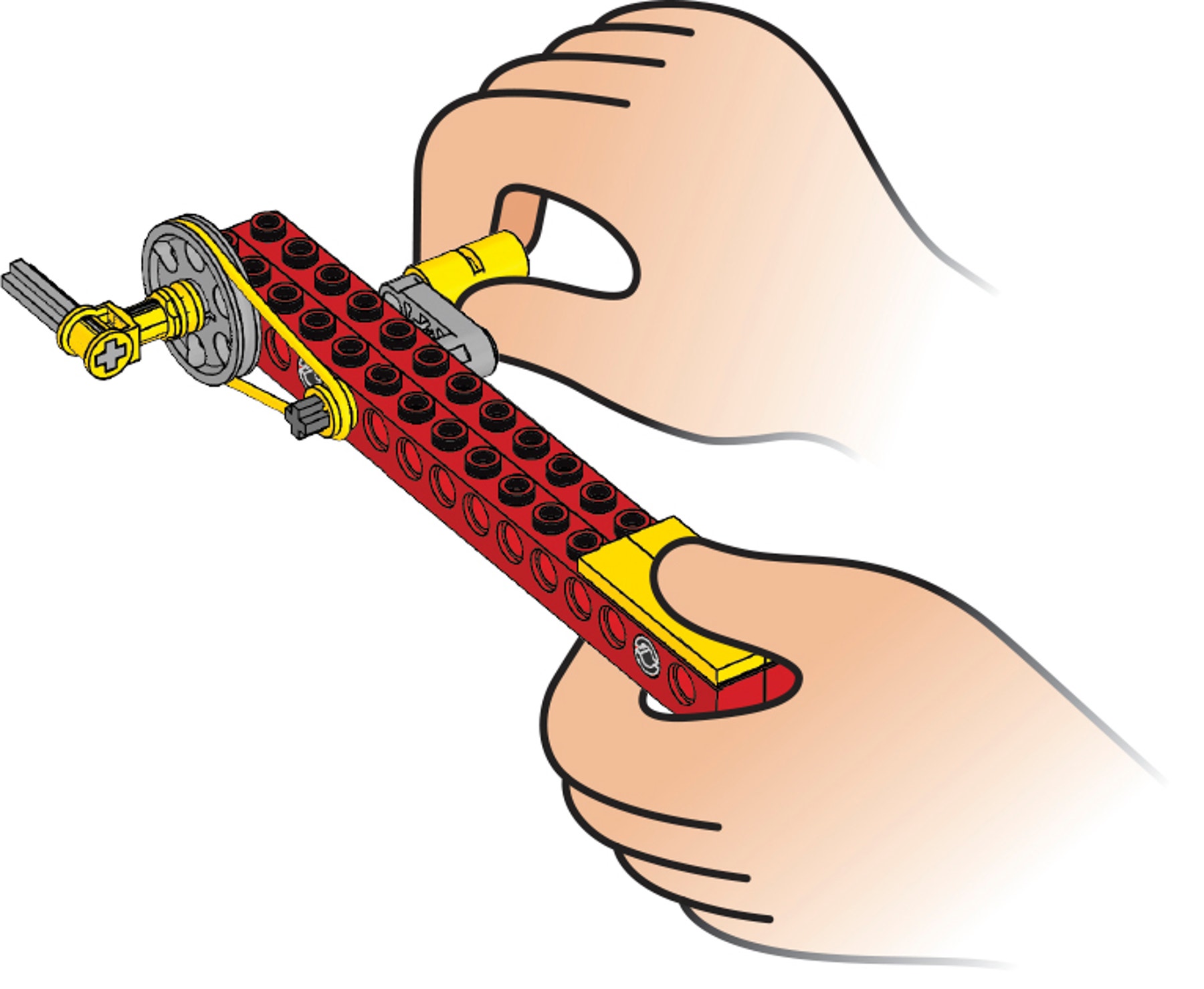
Contemplate
(3-5 minutes)
Try out the model and make observations.
Count how many times the handle has to turn for the position marker to turn once.
Three turns of the handle (the small driver) results in one turn of the large driven wheel. This ratio of 3:1 (or 3/1) is called the gearing down ratio. Decreasing speed decreases the speed of rotation but increases the force, and the belt can slip.
Observe which way the pulleys turn when you crank the handle, and draw arrows to show the directions they turn in.
The pulley wheels turn in the same direction.

Construct
(3-5 Minutes)
Build D5 (Fixed pulley).
Follow Building Instructions D, pages 24 to 32, steps 1 to 10.
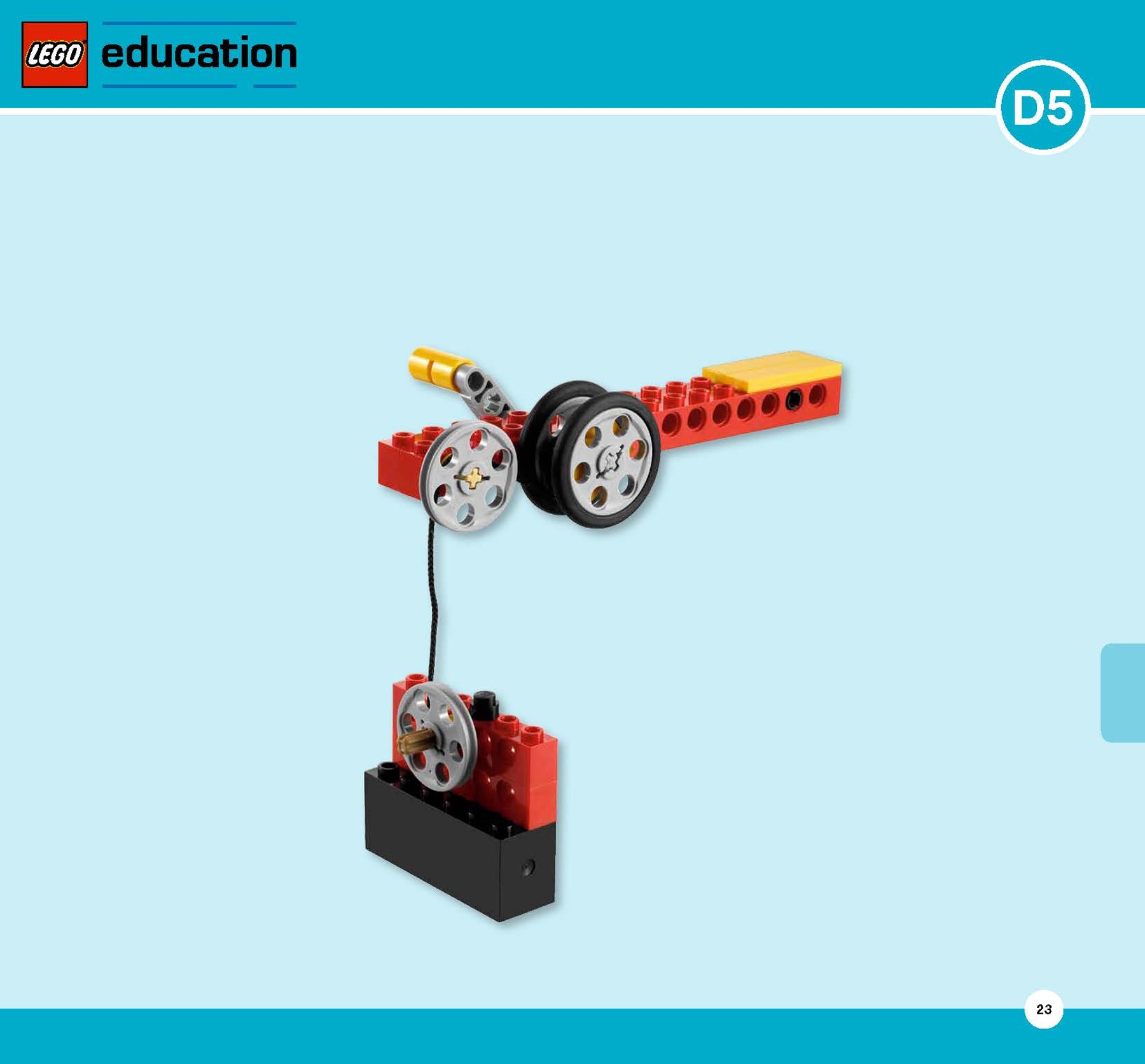
Label the pulley.
Draw a line from the word to the picture of the model.
A fixed pulley is made rigid or fastened so that it cannot be moved.

Contemplate
(3-5 minutes)
Try out the model and make observations.
Observe the directions of movement in the line when the model is used to lift a load.
Mark the direction of movement of the line with arrows, from the load to the fixed pulley and from the fixed pulley to the winch. Continue from where the first arrow is drawn on the model.
This model shows a single fixed pulley. This merely changes the direction of motion, which students will notice if the arrows are drawn correctly.
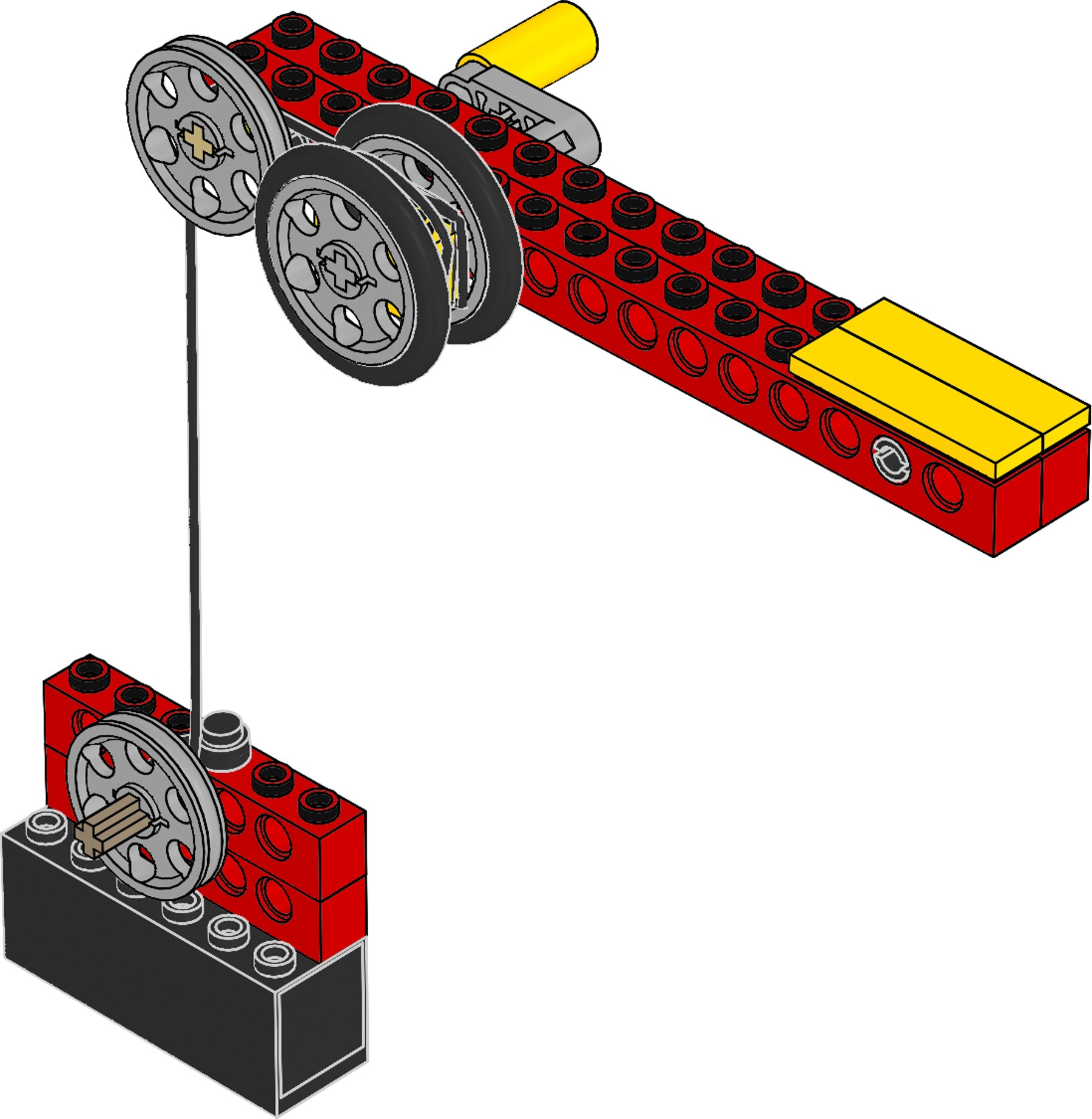
Continue
Try other lessons!
Now that you have mastered the principles of pulleys try the Crazy Floors lesson.
Teacher Support
Student will learn to:
Change the orientation of a pulling force
Change the direction of rotation
Change the orientation of a rotating movement
Increase a pulling force
Increase or decrease the speed of rotation
Increase turning force, also called torque
NGSS
Disciplinary Core Ideas: Physical Science
MS-PS2 Motion and Stability: Forces and Interactions
Crosscutting Concepts
Cause and effect: Mechanism and explanation
Science and Engineering Practices
Developing and using models
Planning and carrying out investigations
Planning and carrying out investigations
Analyzing and interpreting data
Constructing explanations and designing solutions
Obtaining, evaluating, and communicating information
Mathematical Practice
MP5 / MP6
Common Core English Language Arts
W.3.2 / W.4.2 / W.5.2 / SL.3.1 / SL.4.1 / SL. 4.3 / SL.5.1
Student Material
Share with:
 Google Classroom
Google Classroom



